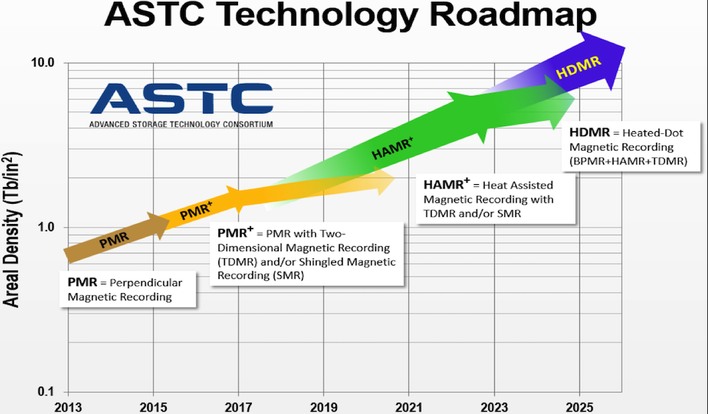Seagate Ships First HAMR Hard Drives Allowing Monster 50TB And Larger Capacities

Hard drives are dead, right? The proliferation of cheap solid-state storage certainly has made the ol' spinning rust largely obsolete for desktop builds and typical consumers, but when you need to store a ton of data in as small a space as possible, you're still not going to beat a hard drive. It looked like that might stop being the case for a while, but Seagate's just started shipping the first HAMR drives at 32TB capacity.
What is HAMR? It stands for Heat-Assisted Magnetic Recording. Basically, there are two ways you can increase the capacity of a hard drive: either add more platters—the magnetic discs inside the drive—or increase the density of those platters. Seagate's been shipping ten-disc drives for some time now, so the "add more platters" idea is pretty much spent. Instead, the goal is to increase bit density.

HAMR's been a long time coming. Seagate's been talking about the technology since around 2002, and started doing test prodcution in 2018, but it's only now making its way to market some 21 years after conception. Seagate expects standard perpendicular magnetic recording (PMR) and shingled magnetic recording (SMR) drives to stay on the market for some time, but it'll be HAMR drives that offer the really high capacity which makes the hyperscale cloud operator guys drool.


